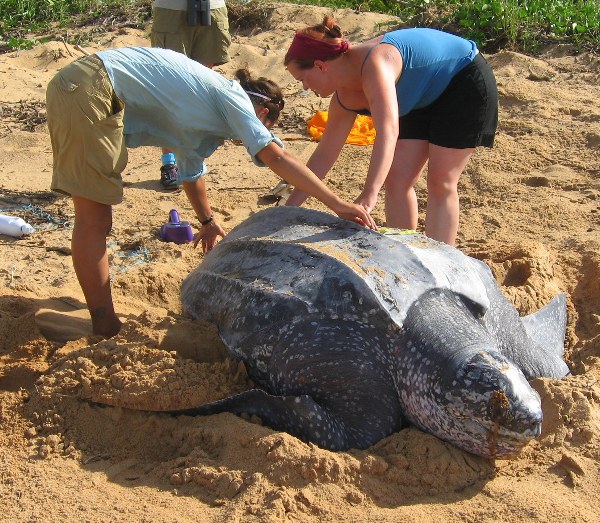Beautiful leviathan: the leatherback sea turtle
By Phyllis Sena
The gargantuan leatherback sea turtle (Dermochelys coriacea) is the largest of all sea turtles and according to the IUCN Red List, is also critically endangered with their population declining 90 percent in the past 20 years. This sea turtle got its name by having a soft, leathery textured carapace (top shell) instead of the common hard shell that other turtles have. This enormous species can weight up to 2,000 lbs. during adulthood and can measure up to 6 ½ feet long!
Leatherbacks are the most migratory and wide ranging of sea turtle species, but can also be seen feeding in coastal waters. Their largest nesting areas are found on the coasts of Northern South America and West Africa and within the United States, Puerto Rico and Southeast Florida are popular (and protected) spots for Leatherbacks to lay clutches of approximately 100 eggs at a time.
Since this species is on the IUCN Red List, their nesting beaches are protected and closely monitored by government and non-profit organizations who target the main causes of population decline: egg harvesting and bycatch. The term bycatch means incidental capture in fishing gear, mainly from large fishing ships that use gillnets, longlines, and traps as techniques to catch their fish. Sea turtles and other marine animals are frequently caught from these illegal methods, and because of this threat and egg harvesting combined, the leatherback population is having a hard time recovering.


